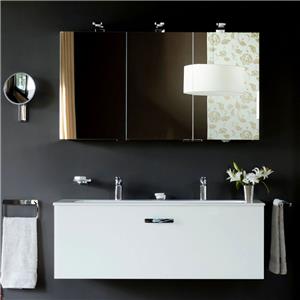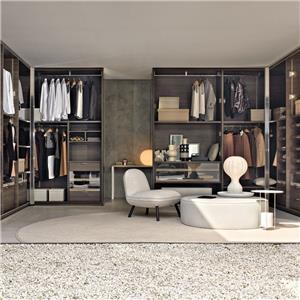Practical Tips for Better Bathroom Storage Utilization
Practical Tips for Better Bathroom Storage Utilization
The bathroom is the smallest area in a home, and despite its small size, it requires careful consideration of both functional division and storage. Without proper organization, it can become cluttered within a few days. To achieve effective storage, it's essential to learn about space planning. Here, we sum up some tips from 3 aspects in the following.
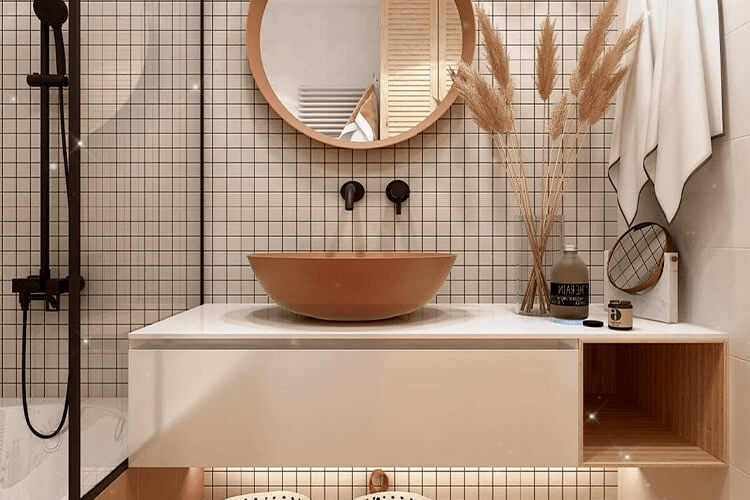
1.Concealing Items
The first step in turning a messy collection of items into an orderly arrangement is to hide them away. This is where cabinets come into play, allowing you to conceal all the items that need to be stored.

The bathroom cabinet is the main storage solution in the bathroom and can hold an impressive range of items, including cleaning supplies, toiletries, and small appliances like hair dryers. It is also convenient to access, as you can simply open the cabinet to retrieve what you need.
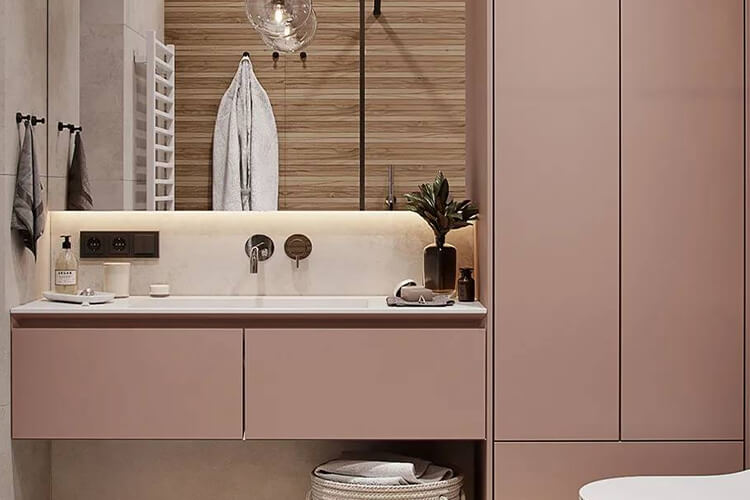
Depending on the size of the storage space, the variety of items to be stored, and your usage habits, you can consider the following designs for your bathroom cabinet:
Floating Bathroom Cabinet: If space is limited or you have fewer items to store, a floating bathroom cabinet is a great choice. It saves space by being elevated from the floor, prevents moisture damage, and eliminates difficult-to-clean corners. The extra space at the bottom can be utilized to store items like buckets or stools.

Bathroom Cabinet with Swing Doors:This is a common design that maximizes storage space and is suitable for situations where you have many items to store. It also provides a visually appealing and uniform look.

Bathroom Cabinet with Drawers:Transforming the cabinet doors into drawers allows for better organization and categorization of items. It makes it easier to find things when you need them and is suitable for situations with fewer items to store.
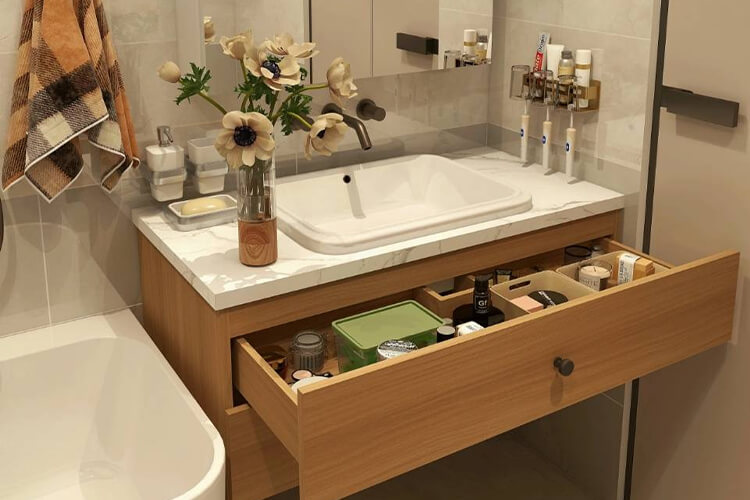
The washing area tends to have numerous bottles and containers, and placing them all on the countertop not only looks messy but also makes it difficult to find what you need. This is where a mirror cabinet comes in handy! It serves the dual purpose of a mirror and storage. There are three common storage forms for mirror cabinets: fully enclosed, open, and semi-open.
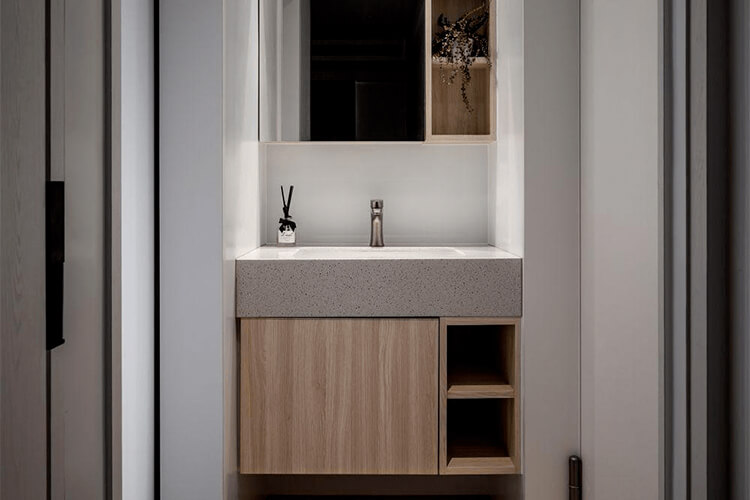
Fully Enclosed Mirror Cabinet: From a visual standpoint, a fully enclosed mirror cabinet hides all the clutter on the countertop, creating a clean and tidy design. It also effectively prevents dust from accumulating. However, it can be inconvenient to open the cabinet every time you need something. You can consider open or semi-open designs instead.
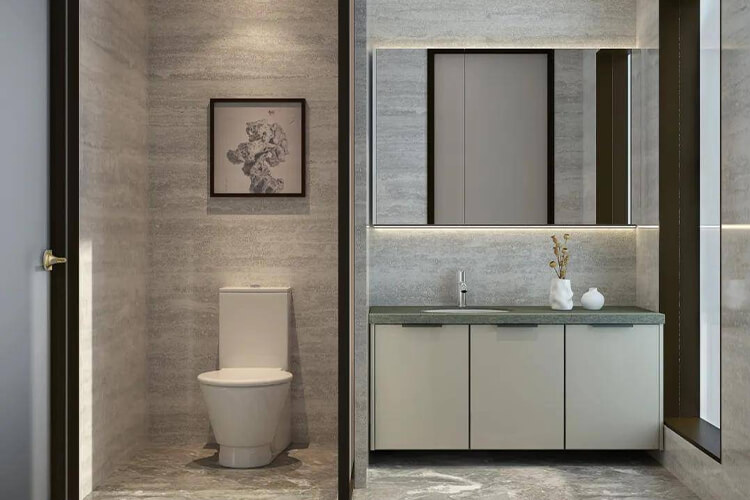
Open Mirror Cabinet:An open mirror cabinet is more convenient to access than a fully enclosed one, as you don't need to open and close cabinet doors repeatedly. However, it requires regular cleaning as it is prone to collecting dust.
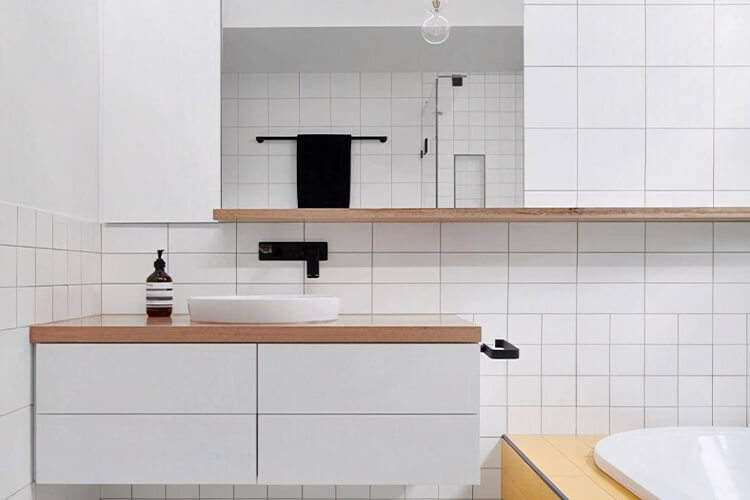
Semi-Open Mirror Cabinet: The semi-open mirror cabinet combines the advantages of both fully enclosed and open designs. It allows for storage while maintaining cleanliness. Following the classic 80/20 organizing principle, it offers a balance between concealed and exposed storage, relieving the countertop space.
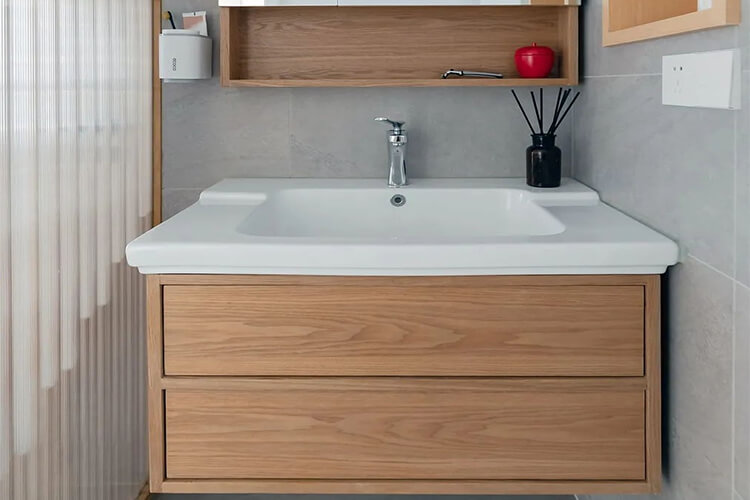
Mirror Cabinet with Empty Space at the Bottom: If you have fewer items to store, you can create an open compartment at the bottom of the mirror cabinet to store frequently used toiletries. Inside the cabinet, you can organize other items according to your daily habits.
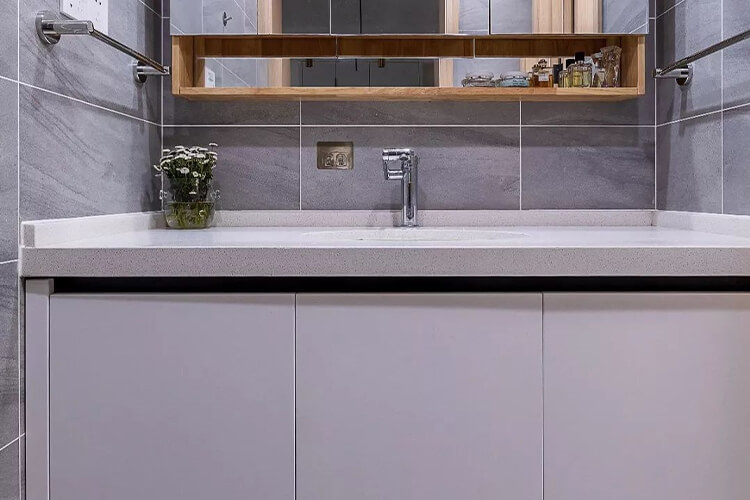
Mirror Cabinet with Empty Space on Single or Both Side:If you have many items to store, you can install open compartments on one or both sides of the mirror cabinet, arranging them based on the quantity of items.
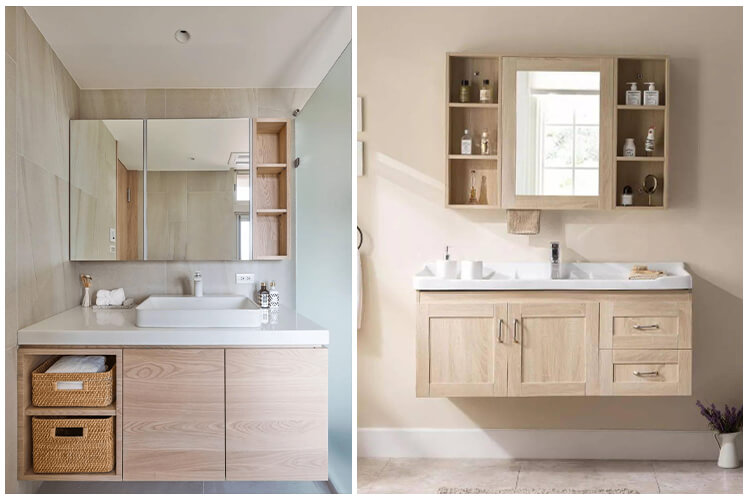
2. Hanging Items
While cabinets provide a broad solution for storage, some small items are not suitable for concealment, such as towels and bath sponges. You can make use of the wall space to hang these items.
Towel rack: Nowadays, the average person has at least two towels, so if there are three people in the house, that's six towels. After use, it's best to choose to hang them up, which also facilitates ventilation and prevents the growth of bacteria. You can install a towel rack near the sink or on the wall for easy access.
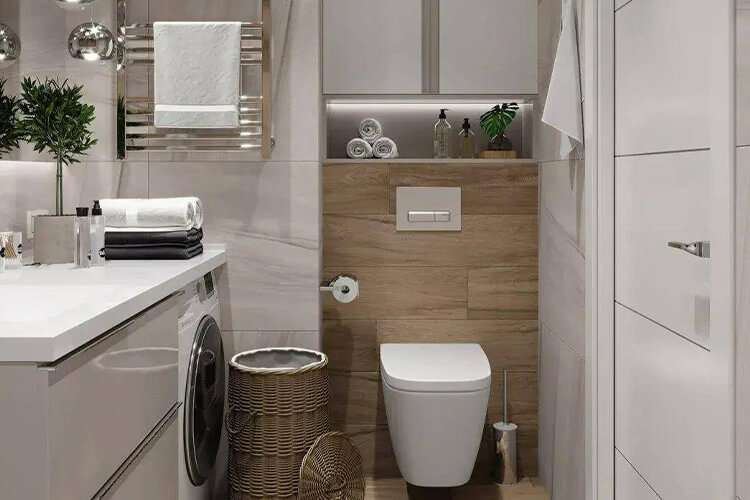
Hooks: Hooks are small but have strong adhesive power, and they don't take up much space. Placing hooks in the bathroom allows you to directly hang towels or bath sponges, making storage convenient as well.
3. Space Utilization
What if your bathroom is so small that it's only 3 square meters? Although the inherent conditions are limited, we can create conditions later on, and these few spaces must be utilized to achieve a doubled storage effect!
Above the toilet
The space above the toilet is often overlooked, but if properly utilized, it can provide a considerable storage area. I recommend two designs: suspended cabinets and partitions, which combine aesthetics and functionality.
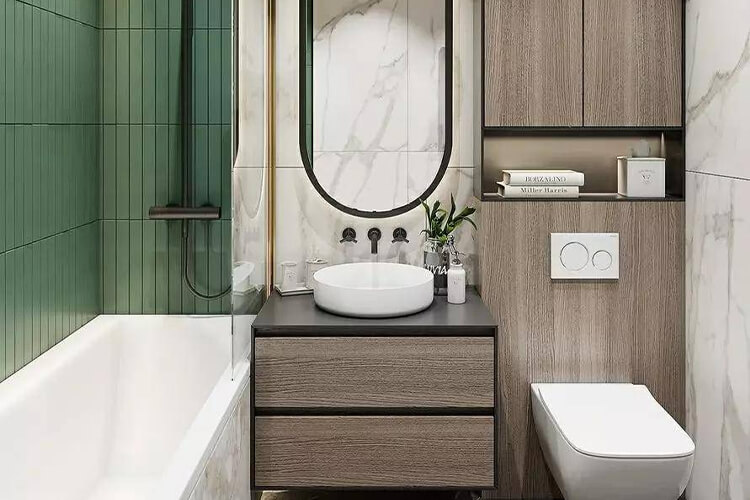
Suspended cabinets: If you have a wall-mounted toilet with the water tank hidden in the wall, you can increase storage space by installing a set of suspended cabinets on the wall. The half-wall area of the toilet can also serve as a countertop for storage.
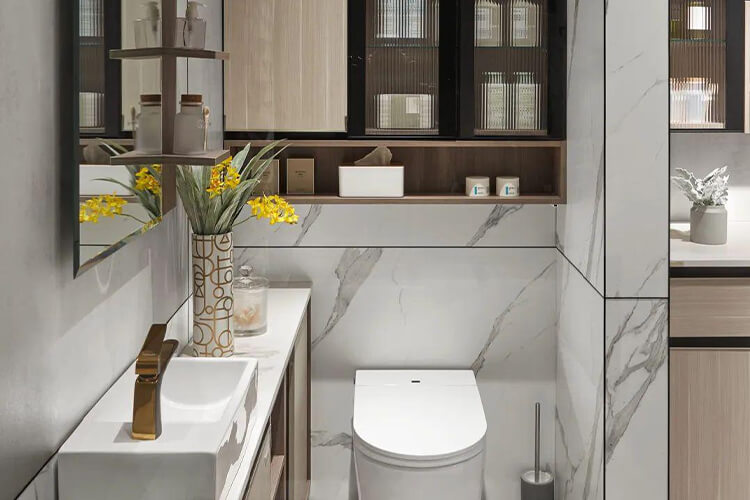
Partitions: If you have a regular toilet, you can directly place multiple partitions above the water tank to store aromatherapy items, miscellaneous items, and more. This design is both stylish and practical.
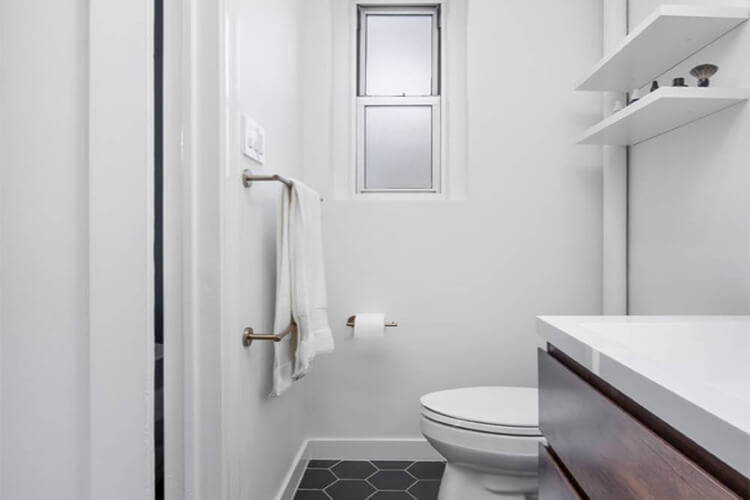
Shower Niche
For a small shower area in the bathroom, opting for a niche design is a perfect choice! It allows for storage within the wall without taking up additional space.

The depth of the niche should be between 15-20 cm. If it's too shallow, the storage effect will be poor, and if it's too deep, it may affect the stability of the wall. Considering that it will be designed on a non-load-bearing wall, the thickness of the niche should not be less than 30 cm.

